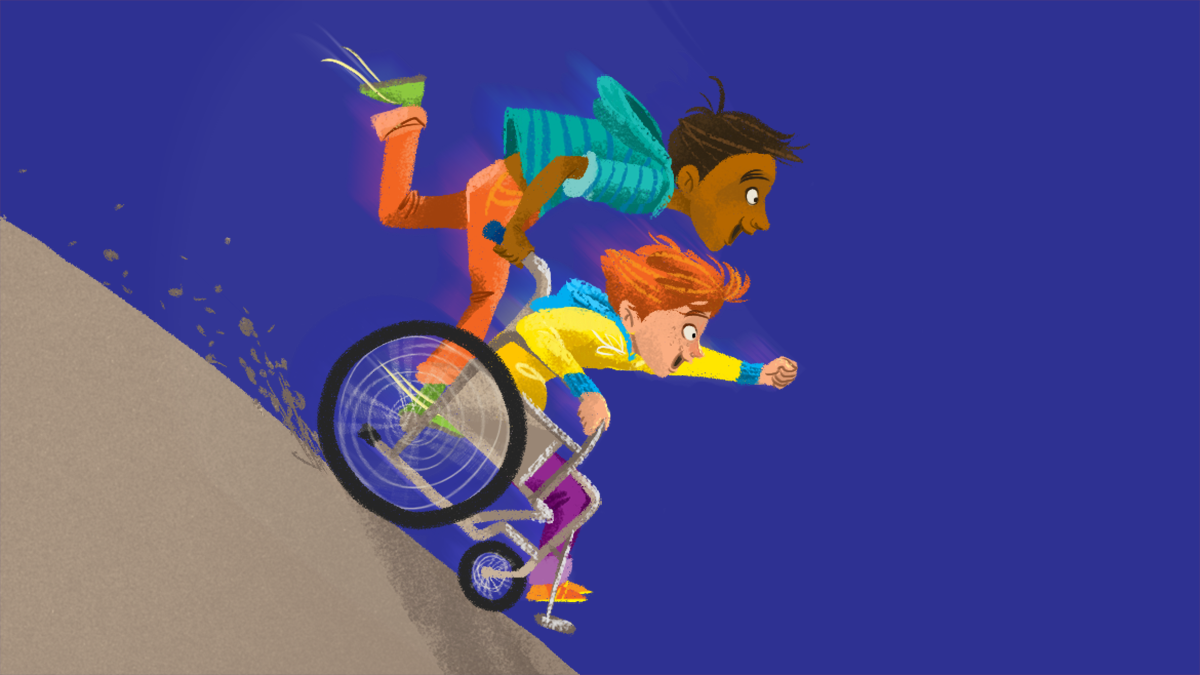Thinking about diversity
In this guide to thinking about diversity you will find tips on how to represent different types of people, the right language to use and much more.

Does it need to be 'about' diversity?
Many books featuring disabled characters focus on the challenges and the idea of triumphing in the face of adversity. Many LGBTQ (Lesbian, Gay, Bisexual, Transgender and Queer) stories focus on the coming out experience, like Nancy Garden's Annie on My Mind. These themes are important and need to stay in YA fiction.
However, stories also need diverse characters that are simply part of the natural landscape. In your writing, try to include diverse characters where little or no reference is made to their diverse identity. It's more about character and how they fit into the story and how they interact with other characters.
In Maggie Stiefvater's The Dream Thieves, Ronan being gay is part of a romantic plot, but not the driving force of the story. He is also a non-stereotypical gay character, being macho, liking fast cars and tattoos, and being Catholic too.
Sometimes, of course, it may be relevant for your stories to consider issues of racism, sexism, homophobia or other prejudices, but it also isn't automatically true that your diverse characters have to be experiencing prejudice as inevitable. It depends on the story. Two Boys Kissing by David Levithan combines a number of stories about gay young men who both are and are not experiencing prejudice about their relationships.
Avoiding 'compensating' for disability
Particularly in the case of disability, some stories bestow characters with a special power or almost superhuman skill, as though to 'compensate' for being disabled. Others suggest that the disabled person is implausibly brave, good-natured or angelic. John Green in The Fault in Our Stars features all three main characters as disabled, desirable and defined by their personalities. They are not superheroes; they're normal young people relating to each other.
The same goes for all characters that you write: avoid extremes. It's short-sighted to make any of your characters totally a sinner or a saint; diverse characters can do bad things too!
Recognising that everybody is different
Giving a group of people a label tells you very little about its members. Take deafness as an example. There are many different degrees of hearing impairment, and children can be born deaf or lose their hearing as they grow up or as a result of illness or accident. Deaf children may learn sign language, lip-read, have speech therapy, have one or more hearing aids, have cochlear implants and/or see themselves as part of the Deaf community. Or maybe only one of those descriptions applies to them.
Similarly, the phrase LGBTQ represents a vast number of people that often do not identify with each other as a larger group, and contains a large spectrum of experience within each separate area. There is cultural, sexual, educational, financial and religious diversity within all ethnicities.
Language (and avoiding clichés)
Be aware of the way you describe characters that may not be the 'norm' in some way. Avoid clichés just like you would in any descriptive writing or in dialogue. For instance, it is both inappropriate and lazy writing to compare black or brown skin to foodstuffs such as coffee or chocolate. Don't use language that makes diversity strange or exotic, implying that there is a norm elsewhere that doesn't include certain people.
Questions to ask of your writing:
- Have I included more than one character representing a range of classes, cultures, ethnicities, genders and sexualities in my story?
- Are there any people with disabilities in my story?
- What is the role of the non-white, non-able bodied, working class, LGBTQ characters in my story? Are they included as main characters or are they background? Are they heroes, villains, supporting characters, main characters?
- Am I using inappropriate language, associations, imagery or clichés to describe any of these characters?
- Do my characters have attitudes and interests and do things happen to them that are not specifically related to their gender/race/sexuality?
- Does my writing pass the Bechdel test - does it includes a scene where two or more women speak to each other about something other than a man?
